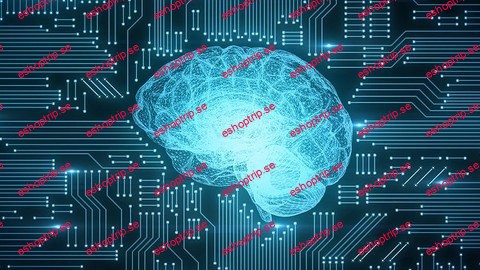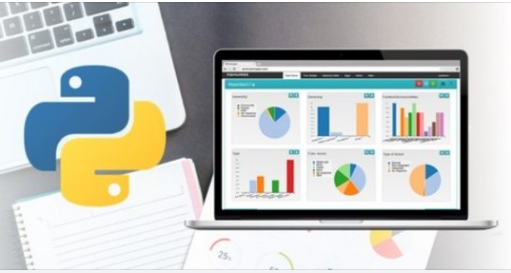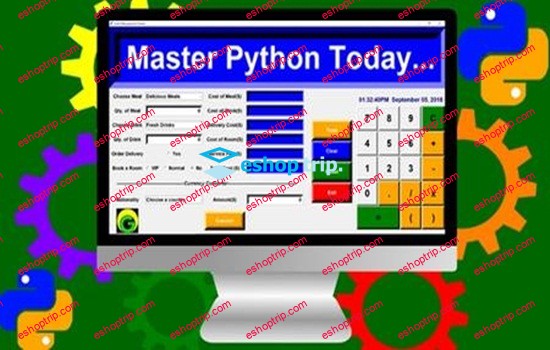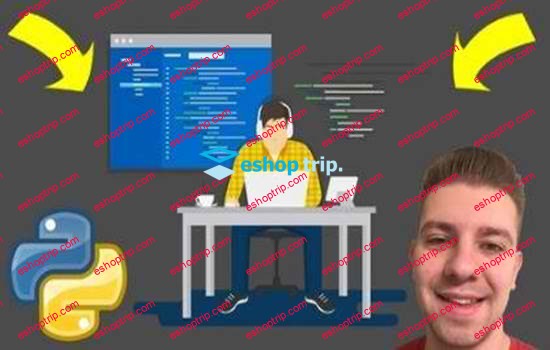Published 4/2024
MP4 | Video: h264, 1920×1080 | Audio: AAC, 44.1 KHz
Language: English | Size: 8.34 GB | Duration: 11h 36m
Learn to create Machine Learning Algorithms in Python using Different Datasets
What you’ll learn
Around 15+ Machine learning algorithms explanation with different datasets and 15+ assignment for practice
Supervised and Unsupervised learning models,PRINCIPLE COMPONENT ANALYSIS(PCA)
Solve any problem in your business, job or personal life with powerful Machine Learning models
Train machine learning algorithms to predict house prices, identify handwriting, detect cancer cells & more
Requirements
Basic Python programming knowledge is necessary
Good understanding of linear algebra,Stastics
Description
This course provides a broad introduction to machine learning and statistical pattern recognition. Topics include: supervised learning (generative/discriminative learning, parametric/non-parametric learning, support vector machines); unsupervised learning (clustering, dimensionality reduction, kernel methods); learning theory (bias/variance tradeoffs; VC theory; large margins);Gain complete machine learning tool sets to tackle most real world problemsUnderstand the various regression, classification and other ml algorithms performance metrics such as R-squared, MSE, accuracy, confusion matrix,etc. and when to use them.Combine multiple models with by bagging, boosting or stackingMake use to unsupervised Machine Learning (ML) algorithms such as Hierarchical clustering, k-means clustering etc. to understand your dataDevelop in Spyder and various IDECommunicate visually and effectively with Matplotlib and SeabornEngineer new features to improve algorithm predictionsMake use of train/test, K-fold and Stratified K-fold cross validation to select correct model and predict model perform with unseen dataUse SVM for handwriting recognition, and classification problems in generalUse decision trees to predict staff attritionAnd much much more!No Machine Learning required. Although having some basic Python experience would be helpful, no prior Python knowledge is necessary as all the codes will be provided and the instructor will be going through them line-by-line and you get friendly support in the Q&A area.If you want to ride the machine learning wave and enjoy the salaries that data scientists make, then this is the course for you!Take this course and become a machine learning engineer!
Overview
Section 1: Introduction
Lecture 1 What Is Machine learning
Lecture 2 Key Skills needed to learn Machine learning
Lecture 3 Supervised learning vs Unsupervised Learning
Lecture 4 Dependent Variable vs Independent Variable
Lecture 5 What Does This Course Cover
Lecture 6 Basic Python Concepts
Section 2: Introduction to Machine Learning and Anaconda Installation
Lecture 7 Introduction to Machine Learning
Lecture 8 Anconda Installation
Section 3: Exploratory Data Analysis
Lecture 9 What is Exploratory Data Analysis(EDA)
Lecture 10 knowing initial details of dataset
Lecture 11 Modifying or removing unwanted data
Lecture 12 Retrieving Data
Lecture 13 Statistical Information
Lecture 14 Drawing Graphs
Lecture 15 EDA Assignment
Section 4: Outliers
Lecture 16 What is Outliers
Lecture 17 Finding the Outliers
Lecture 18 IQR and handling the outliers
Section 5: Simple Linear Regression
Lecture 19 What is Regression
Lecture 20 What is simple liner regression model
Lecture 21 What is r-squared Value
Lecture 22 Simple linear regression Program-1
Lecture 23 Simple linear regression Program-2(train and test data)
Section 6: Multiple Linear Regression
Lecture 24 What is Multiple Linear Regression
Lecture 25 Multiple Linear Regression -program 1
Section 7: One Hot Encoding
Lecture 26 What Is One Hot Encoding
Lecture 27 One Hot Encoding-First way
Lecture 28 One Hot Encoding-Second way
Lecture 29 One Hot Encoding-Program 1
Lecture 30 One Hot Encoding-Program 2(Third way)
Section 8: Polynomial Linear Regression
Lecture 31 What is Polynomial Linear Regression
Lecture 32 Polynomial Linear Regression Program-1
Section 9: Ridge Regression
Lecture 33 What is Bias and Variance
Lecture 34 What is Regularization
Lecture 35 Ridge Regression-Program 1
Lecture 36 Ridge Regression-Assignment
Section 10: Lasso Regression
Lecture 37 What is Lasso regression and practice program-1
Section 11: ElasticNet Regression
Lecture 38 what is ElasticNet Regression and practice program-1
Section 12: Logistic Regression
Lecture 39 What is Logistic Regression and program-1
Section 13: Support Vector Machine(SVM)
Lecture 40 What is Support Vector Machine
Section 14: Naive Bayes Classification
Lecture 41 What is Naive Bayes Classification
Lecture 42 Naive Bayes Classification Program-1
Lecture 43 Naive Bayes Classification Program-2
Section 15: KNN Classifier
Lecture 44 KNN Classifer defination and its practice program-1
Section 16: Decision Trees
Lecture 45 Decision Trees Defination and its program-1
Section 17: Random Forest
Lecture 46 Random Forest Defination and its practice program-1
Section 18: K-Means Clustering(unsupervised model)
Lecture 47 What is K-Means Clustering
Lecture 48 K-Means Clustering Program-1
Section 19: Apriori Algorithm
Lecture 49 What is Apriori Algorithm
Section 20: Principle Component Analysis(PCA)
Lecture 50 what is Principle Component Analysis(PCA)
Lecture 51 Principle Component Analysis Program-1
Lecture 52 Principle Component Analysis Program-2
Lecture 53 Principle Component Analysis-Assignment
Section 21: K-Fold Cross Validation
Lecture 54 What is K-Fold Cross Validation
Lecture 55 K-Fold Cross Validation Program-1
Section 22: Model Selection
Lecture 56 What is Model Selection
Lecture 57 Model Selection Program-1
Section 23: Assignment Solutions
Lecture 58 Assignment Solutions
Anyone willing and interested to learn machine learning algorithm with Python,Anyone who want to choose carrer in Datascience,AI,Machine learning,Data analytics,Anyone wishes to move beyond the basics and develop an understanding of the whole range of machine learning algorithms
Homepage
https://anonymz.com/?https://www.udemy.com/course/complete-machine-learning-course-with-python/










